Related Research Articles
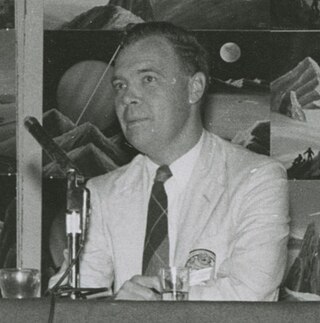
Harry Clement Stubbs, better known by the pen name Hal Clement, was an American science fiction writer and a leader of the hard science fiction subgenre. He also painted astronomically oriented artworks under the name George Richard.
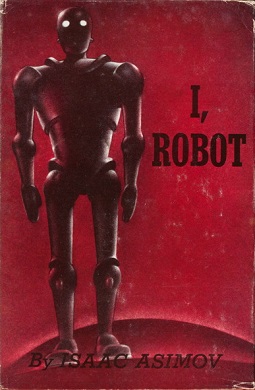
I, Robot is a fixup collection made up of science fiction short stories by American writer Isaac Asimov. The stories originally appeared in the American magazines Super Science Stories and Astounding Science Fiction between 1940 and 1950 and were then collected into a 1950 publication Gnome Press in 1950, in an initial edition of 5,000 copies.

John Wood Campbell Jr. was an American science fiction writer and editor. He was editor of Astounding Science Fiction from late 1937 until his death and was part of the Golden Age of Science Fiction. Campbell wrote super-science space opera under his own name and stories under his primary pseudonym, Don A. Stuart. Campbell also used the pen names Karl Van Kampen and Arthur McCann. His novella Who Goes There? was adapted as the films The Thing from Another World (1951), The Thing (1982), and The Thing (2011).
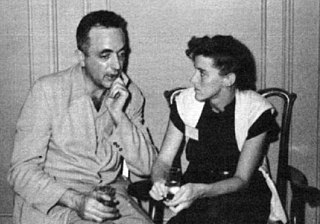
Katherine Anne MacLean was an American science fiction author best known for her short fiction of the 1950s which examined the impact of technological advances on individuals and society.

Murray Leinster was a pen name of William Fitzgerald Jenkins, an American writer of genre fiction, particularly of science fiction. He wrote and published more than 1,500 short stories and articles, 14 movie scripts, and hundreds of radio scripts and television plays.
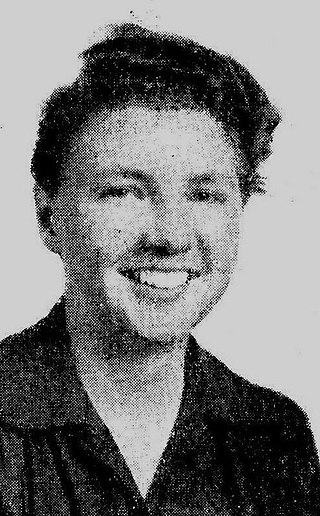
Leigh Douglass Brackett was an American science fiction writer known as "the Queen of Space Opera." She was also a screenwriter, known for The Big Sleep (1946), Rio Bravo (1959), and The Long Goodbye (1973). She worked on an early draft of The Empire Strikes Back (1980), elements of which remained in the film; she died before it went into production. In 1956, her book The Long Tomorrow made her the first woman ever shortlisted for the Hugo Award for Best Novel, and, along with C. L. Moore, one of the first two women ever nominated for a Hugo Award. In 2020, she posthumously won a Retro Hugo for her novel The Nemesis From Terra, originally published as "Shadow Over Mars".

Out of the Unknown is a British television science fiction and horror anthology drama series, produced by the BBC and broadcast on BBC2 in four series between 1965 and 1971.

Nightfall and Other Stories (1969) is a collection of 20 previously published science fiction short stories by Isaac Asimov. Asimov added a brief introduction to each story, explaining some aspect of the story's history and/or how it came to be written.
"The Cold Equations" is a science fiction short story by American writer Tom Godwin, first published in Astounding Magazine in August 1954. In 1970, the Science Fiction Writers of America selected it as one of the best science-fiction short stories published before 1965, and it was therefore included in The Science Fiction Hall of Fame, Volume One, 1929–1964. The story has been widely anthologized and dramatized.

"Omnilingual" is a science fiction short story by American writer H. Beam Piper. Originally published in the February 1957 issue of Astounding Science Fiction, it focuses on the problem of archaeology on an alien culture.
"The Adaptive Ultimate" is a science fiction short story by American writer Stanley G. Weinbaum, about an experimental medical treatment gone awry. It was first published in the November 1935 issue of Astounding magazine under the pen name "John Jessel". It was collected in various editions of A Martian Odyssey, as well as the 1979 The Best Of Stanley G. Weinbaum.
"Microcosmic God" is a science fiction novelette by American writer Theodore Sturgeon. Originally published in April 1941 in the magazine Astounding Science Fiction, it was recognized as one of the best science fiction short stories published before the Nebula Awards by the Science Fiction Writers of America in 1970, and was named as one of the best science fiction stories in polls by Analog Science Fiction and Fact in 1971 and Locus in 1999. In 1976, it was also published as a comic book version in issue 3 of Starstream: Adventures in Science Fiction, a comic anthology in four issues by Gold Key Comics.

Tales of Tomorrow is an American anthology science fiction series that was performed and broadcast live on ABC from 1951 to 1953. The series covered such stories as Frankenstein starring Lon Chaney Jr., 20,000 Leagues Under the Sea starring Thomas Mitchell as Captain Nemo, and many others.
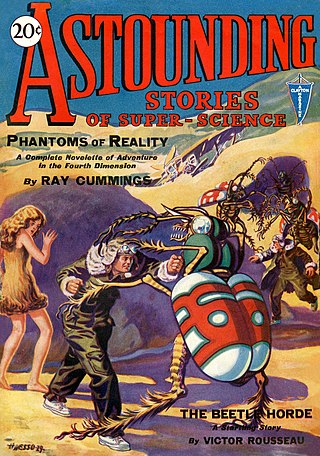
Analog Science Fiction and Fact is an American science fiction magazine published under various titles since 1930. Originally titled Astounding Stories of Super-Science, the first issue was dated January 1930, published by William Clayton, and edited by Harry Bates. Clayton went bankrupt in 1933 and the magazine was sold to Street & Smith. The new editor was F. Orlin Tremaine, who soon made Astounding the leading magazine in the nascent pulp science fiction field, publishing well-regarded stories such as Jack Williamson's Legion of Space and John W. Campbell's "Twilight". At the end of 1937, Campbell took over editorial duties under Tremaine's supervision, and the following year Tremaine was let go, giving Campbell more independence. Over the next few years Campbell published many stories that became classics in the field, including Isaac Asimov's Foundation series, A. E. van Vogt's Slan, and several novels and stories by Robert A. Heinlein. The period beginning with Campbell's editorship is often referred to as the Golden Age of Science Fiction.

A medical bag is a portable bag used by a physician or other medical professional to transport medical supplies and medicine.
Pauline Whitby was a British science fiction author who wrote under the pseudonym Pauline Ashwell. She also wrote under the names Paul Ashwell and Paul Ash. She took her surname from Ashwell, Hertfordshire.

The Many Worlds of Poul Anderson is a collection of science fiction short stories by American writer Poul Anderson, edited by Roger Elwood, first published in hardcover by Chilton in June 1974. A paperback edition retitled The Book of Poul Anderson followed from DAW Books in June 1975, and was reprinted in June 1978, December 1978, and October 1983. Most of the pieces were originally published between 1947 and 1971 in the magazines Astounding Science Fiction, The Magazine of Fantasy and Science Fiction, Analog, Riverside Quarterly, and Other Worlds Science Stories. The others are original to the collection.

Excess skin is an effect of surplus skin and fat after expansion during pregnancy or adipositas and following a massive and considerable weight loss. Further reasons can be aging effects, genetic disorders or an intentional expansion for skin reconstruction. Due to the elastic nature of the skin, excessive loose skin is permanent and surgical treatment is often required.

The Best of C. M. Kornbluth is a collection of science fiction and fantasy short stories by American author C. M. Kornbluth, edited by Frederik Pohl. It was first published in hardback by Nelson Doubleday in October 1976 and in paperback by Ballantine Books in January 1977, as a volume in its Classic Library of Science Fiction. A second hardcover edition was issued by Taplinger in November 1977, and an ebook edition by Faded Page in December 2017.

Marie Lilian Vibbert is a science fiction author.
References
- ↑ "Astounding/Analog All-Time Poll Listings". The Locus Index to SF Awards. 2008. Archived from the original on October 23, 2007. Retrieved 2008-06-23.
- ↑ https://www.imdb.com/title/tt0660832/ Retrieved August 3, 2023.